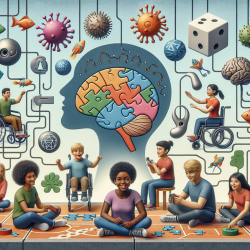As a practitioner working with children with Autism Spectrum Disorder (ASD), understanding the multifaceted influences on symptom severity is crucial. A recent study titled Evaluation of the Relationship of Sleep Disturbances to Severity and Common Behaviors in Autism Spectrum Disorder sheds light on the significant impact of sleep disturbances on the behavioral and social communication skills of children with ASD. This blog post will delve into the key findings of this research and discuss how practitioners can apply these insights to improve therapeutic outcomes.
Key Findings from the Research
The study analyzed sleep patterns in 24 children with ASD using actigraphy and sleep diaries. Here are some of the pivotal findings:
- 92% of the participants experienced one or more sleep disturbances.
- There was a positive correlation between the number of sleep disturbances and the severity of social and communication delays.
- Interestingly, an inverse relationship was observed between sleep disturbances and unusual behaviors, although this was not statistically significant.
These findings underscore the critical role of sleep in the behavioral and social functioning of children with ASD. Practitioners should consider incorporating sleep assessments and interventions into their therapeutic strategies.
Practical Applications for Practitioners
To leverage these insights, practitioners can implement the following strategies:
- Comprehensive Sleep Assessments: Regularly assess sleep patterns using both subjective (sleep diaries) and objective (actigraphy) measures. Identifying specific sleep disturbances can help tailor interventions more effectively.
- Behavioral Interventions: Develop individualized sleep hygiene programs that address common issues such as sleep latency, nighttime awakenings, and early morning arousals. Techniques may include establishing consistent bedtime routines, creating a conducive sleep environment, and managing bedtime anxieties.
- Collaborative Care: Work closely with parents and caregivers to monitor sleep patterns and implement interventions at home. Educate them about the importance of sleep and provide practical tips for improving their child’s sleep quality.
- Further Research: Encourage continued research into the relationship between sleep disturbances and ASD symptomatology. Understanding the nuances of this relationship can lead to more targeted and effective treatments.
Encouraging Further Research
The findings of this study highlight the need for ongoing research into the comorbidities associated with ASD. Practitioners should consider participating in or supporting research efforts to further elucidate the complex interactions between sleep and ASD symptoms. This can ultimately lead to more personalized and effective therapeutic approaches.
To read the original research paper, please follow this link: Evaluation of the Relationship of Sleep Disturbances to Severity and Common Behaviors in Autism Spectrum Disorder.










